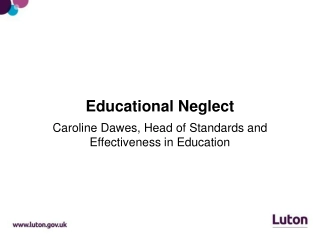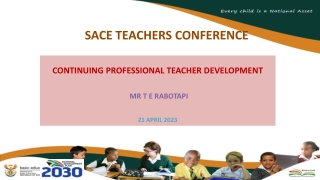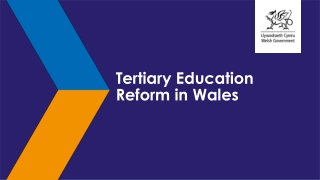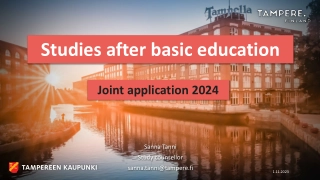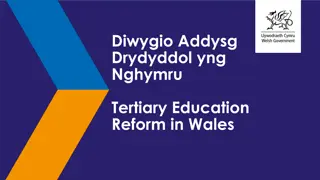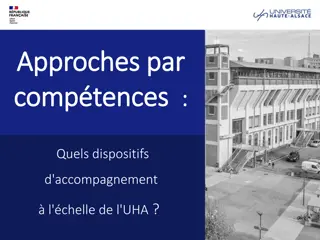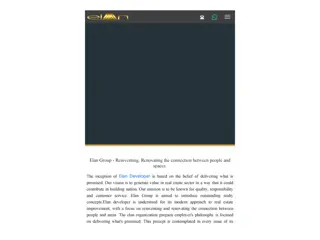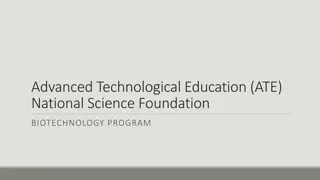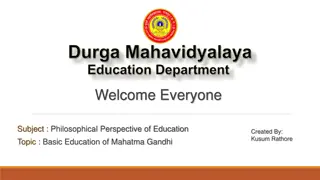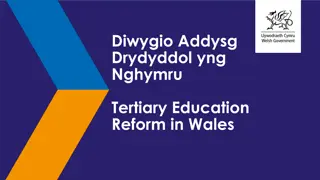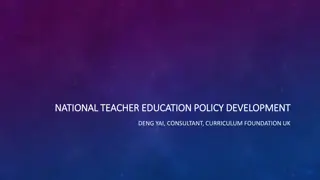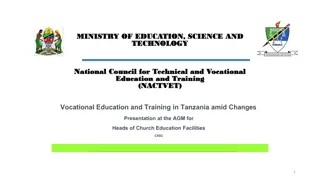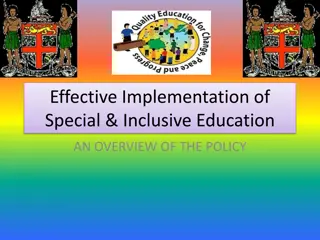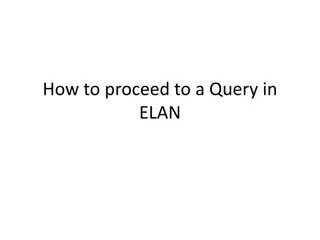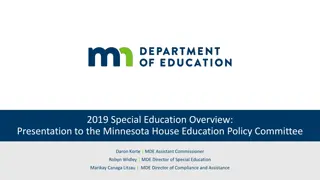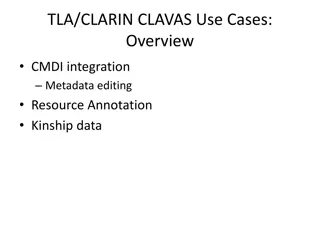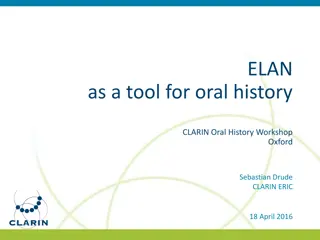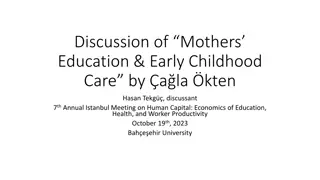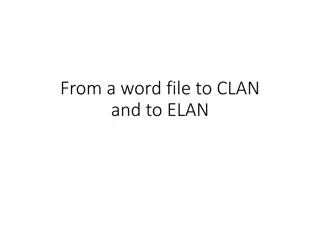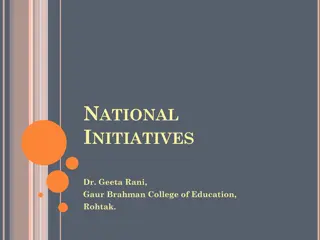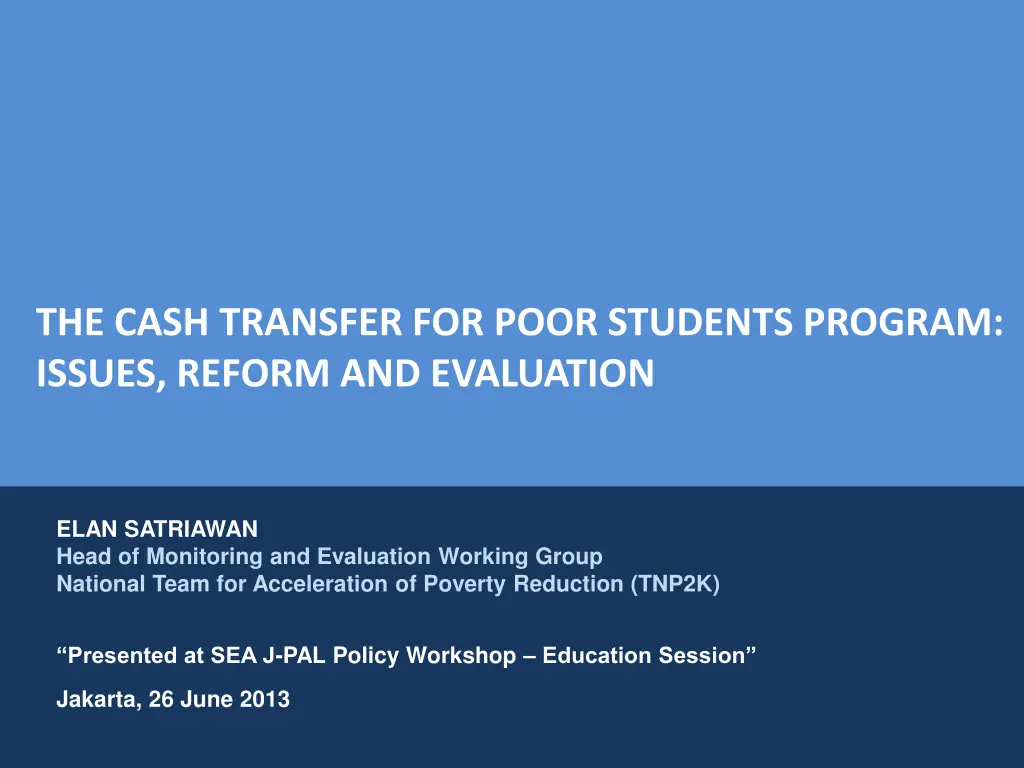
Cash Transfer Program for Poor Students: Issues and Reforms
Explore the challenges and reforms of the Cash Transfer Program for Poor Students in Indonesia, focusing on enrollment barriers, design issues, objectives, and current mechanisms. Learn about targeting issues and strategies for enhancing the program's impact on poverty reduction through financial support for education.
Uploaded on | 1 Views
Download Presentation

Please find below an Image/Link to download the presentation.
The content on the website is provided AS IS for your information and personal use only. It may not be sold, licensed, or shared on other websites without obtaining consent from the author. If you encounter any issues during the download, it is possible that the publisher has removed the file from their server.
You are allowed to download the files provided on this website for personal or commercial use, subject to the condition that they are used lawfully. All files are the property of their respective owners.
The content on the website is provided AS IS for your information and personal use only. It may not be sold, licensed, or shared on other websites without obtaining consent from the author.
E N D
Presentation Transcript
THE CASH TRANSFER FOR POOR STUDENTS PROGRAM: ISSUES, REFORM AND EVALUATION ELAN SATRIAWAN Head of Monitoring and Evaluation Working Group National Team for Acceleration of Poverty Reduction (TNP2K) Presented at SEA J-PAL Policy Workshop Education Session Jakarta, 26 June 2013 NATIONAL TEAM FOR THE ACCELERATION OF POVERTY REDUCTION
Introduction While primary school enrollment in Indonesia has been almost universal, the enrollment to secondary school remain one of main issues in education sector. Several programs have been launched to address problem from both supply and demand side School operation assistance (Bantuan Operasional Sekolah/BOS) Assistance for poor students (Bantuan Siswa Miskin/BSM) This focus on BSM: issues, current reform and M&E for the reform 2 NATIONAL TEAM FOR THE ACCELERATION OF POVERTY REDUCTION
BSM PROGRAM AND ITS DESIGN ISSUES NATIONAL TEAM FOR THE ACCELERATION OF POVERTY REDUCTION TIM NASIONAL PERCEPATAN PENANGGULANGAN KEMISKINAN
CASH TRANSFER FOR THE POOR STUDENTS (BSM) OBJECTIVES Eliminate the barriers for students from poor households to participate in school by providing financial support. Reduce the drop out rates; Encourage households to go back to school; out-of-school children from poor NATIONAL TEAM FOR THE ACCELERATION OF POVERTY REDUCTION
CURRENT MECHANISM FOR QUOTA/ALOCATION/NUMBER OF STUDENTS RECEIVING BSM Current Mechanism to decide students receiving BSM Students name and class are selected using the list proposed by the schools Almost similar for each education level, where quota allocation is decided top-down. Central Gov Management Team Publish a decree/ SK consisted of Students Name, NIS and Class Provincial Allocation Provincial Gov Mngmnt Team Students Name, NIS, Class, Compiled and provided to the central government Central Government Management Team Districts Name, NIS and Class are compiled and provided to the provincial government Provincial Government Management Team Districts Allocation Management Team Students Allocation in each school Districts Management Name, NIS and Class in each school School Team NATIONAL TEAM FOR THE ACCELERATION OF POVERTY REDUCTION
ISSUE 1: TARGETING OF BSM BSM was distributed across all deciles .and only 4% of BSM-SD & SMP benefit can reach children at the bottom 10 percent (deciles 1). Level and the outreach of BSM benefits for the children of SMA age is even lower (less than 2 %) Sources: Susenas (2009) & World Bank (2012) 6 NATIONAL TEAM FOR THE ACCELERATION OF POVERTY REDUCTION
ISSUE 2: SIZE OF BSM BENEFIT The amount of BSM is only 5% of the household poverty line (about 15-30% of individual poverty line expenses) --can only cover half of other educational costs Below are figures of cost for educational operation cost & personal cost (per year in million IDR) Educational Operation Cost Personal Cost SD 0.21 0,91 SMP 0.39 1,39 SMA 0.94 1,66 For poor households, the education costs for SMP/MTs or SMA/MA is around about 30% from the total households expenditures. Minimum complementarity of PKH due to school imposing equality/fairness principle. NATIONAL TEAM FOR THE ACCELERATION OF POVERTY REDUCTION
ISSUE 3: TIMING OF BSM PAYMENT The accuracy of BSM disbursement timing can strongly assist students from poor households, to continue their education (in each education level and each education unit) The drop out rates are higher for students coming from low income or poor families Students coming from low income families often have to drop out from school at 3rd grade. Often time, the scholarship just got disburse by August. June disbursement is very low; Critical time for students: at the end of the school year (May June) & by the beginning of academic year (July), especially during transition period SD/MI SMP/MTs; SMP/MTs SMA/SMA/MA the education NATIONAL TEAM FOR THE ACCELERATION OF POVERTY REDUCTION
REFORM OF BSM PROGRAM NATIONAL TEAM FOR THE ACCELERATION OF POVERTY REDUCTION TIM NASIONAL PERCEPATAN PENANGGULANGAN KEMISKINAN
OBJECTIVES OF THE BSM REFORM 1. Improve the BSM targeting mechanism for primary and secondary education by utilizing the Unified Database (UDB) to identify eligible children as the recipients of BSM Potential Candidate Cards; Thus change the current process of BSM student selection from currently by the School Principals to direct identification of school age children coming from poor households on UDB. Ensure complementarity of BSM with PKH beneficiaries (PKH beneficiaries are very poor families) 2. Increase effectiveness of BSM program in improving enrolment to particularly secondary school Increase program benefit to cover better household educational expenses. Changes in the timing of BSM payments to be distributed at the beginning of each Academic Year (in Aug/Sept for SD and Madrasah), 10 NATIONAL TEAM FOR THE ACCELERATION OF POVERTY REDUCTION
BSM NEW TARGETING MECHANISM The BSM payment mechanism still uses its current mechanism Unified Database List of potential BSM beneficiary Publish a decree/ SK consisted of Students Name, NIS and Class Central Gov Team PT Pos print and send the card to the targeted households Students Name, NIS, Class, compiled and provided to the Central Government Provincial Management Team Pre-printed of child s name and information Students Name, NIS and Class are compiled and provided to the provincial government District Management Team School collect the cards and send the collected cards to the districts team Child takes the cards to the nearby school NATIONAL TEAM FOR THE ACCELERATION OF POVERTY REDUCTION
BSM SD, SMP & Madrasah Existing Selection and Disbursement Timeframe Fiscal Year 2013 Fiscal Year 2012 Semester 2 Semester 1 Semester 1 Academic Year 2012/2013 Academic Year 2013/2014 Academic Year 2012/2013 Aug/Sept 2013 Aug/Sept 2012 July 2013 Juli 2012 Januari 2013 Mar/Apr 2013 SD/Madrasah New Students Enrollment (Grade 1) New Students Enrollment (Grade1) BSM SD & Madrasah Payment (all classes and full payment) New Students are selected and benefits are disbursement for SMP (Grade 7: half of the benefit) BSM SMP Disbursement (all classes: - half benefit for G 9; Full for Grade 7 and 8) New Students Enrollment (Grade 7) New Students Enrollment (Grade 7) New SMP Students BSM fund disbursement (Grade 7) NATIONAL TEAM FOR THE ACCELERATION OF POVERTY REDUCTION
PROPOSED TIMELINE OF BSM BENEFIT DISTRIBUTION (FOR SD, MI & MTs) Semester 1 of the Academic Year Semester 2 of the Academic Year March/April June/July March/April June/July Aug/Sep January BSM Cards Distribution for BSM SD/MI (Grade 7 1) & SMP/MTs (kelas 7) BSM Cards Distribution for BSM SD/MI (Grade 7 1) & SMP/MTs (kelas 7) New Students Enrollment (Grade 1 SD/MI & 7 SMP/MTs) New Students Enrollment (Grade 1 SD/MI & 7 SMP/MTs) BSM Benefit Distribution for the New Enroll 2nd BSM Benefit Disbursement for all students (if the BSM benefit is disbursed 2 times) NATIONAL TEAM FOR THE ACCELERATION OF POVERTY REDUCTION
M&E OF BSM REFORM NATIONAL TEAM FOR THE ACCELERATION OF POVERTY REDUCTION TIM NASIONAL PERCEPATAN PENANGGULANGAN KEMISKINAN
Monitoring The monitoring/evaluation process activities will attempt to cover following key issues: The capacity of central and district MoEC and MoRA in managing new mechanism. The coordination among and compliance of each BSM stakeholders in ensuring that the new design processes --from students submit the card to school to recap process at district and central are done properly. The selection process of new beneficiaries at school in case school has to replace names from the UDB. Some implementation issues: Do the BSM beneficiaries understand better about their entitlement? How was the distribution of BSM card? What are the issues? How was the delivery of BSM? What are the issues and problems? NATIONAL TEAM FOR THE ACCELERATION OF POVERTY REDUCTION
Evaluation Key Evaluation Question : What would be the effect of BSM card distribution to Student Enrolment? And maybe on attendance rate? BSM-PKH complementarities? Using regression discontinuity design by exploring the fact that BSM card is sent to students from the bottom 6% in our unified data base. Later new cut-off with Social Protection Card that is recently sent to bottom 25% and it can be used to access BSM benefit NATIONAL TEAM FOR THE ACCELERATION OF POVERTY REDUCTION
Initial Impact Evaluation Strategy NATIONAL TEAM FOR THE ACCELERATION OF POVERTY REDUCTION
Multi Cutoffs RDD EVALUATION 7 % cutoff 25 % Cut off > 26 % Cut off PPLS Percentiles PKH eligible treshold Bantuan Siswa Miskin (P4S) Eligible PKH BSM Complement Evaluation Control GROUP Effect of card distribution timing (earlier vs later) on enrollment? Effect of BSM/Social Protection Card on enrollment? NATIONAL TEAM FOR THE ACCELERATION OF POVERTY REDUCTION
MORE KNOWLEDGE TO IMPROVE EDUCATION POLICIES NATIONAL TEAM FOR THE ACCELERATION OF POVERTY REDUCTION TIM NASIONAL PERCEPATAN PENANGGULANGAN KEMISKINAN
Parental Investment toward Child Education Demand for (secondary) schooling among the poor: determinants and how to increase it Whether parental knowledge on value of education matter and may increase investment in child schooling maybe using RCT? Child labor vs schooling Relation of early childhood health and subsequent schooling outcomes 21 NATIONAL TEAM FOR THE ACCELERATION OF POVERTY REDUCTION
Effect of Government Policies Effect of BSM (timing of selection, benefit size, etc.), BOS. Effect of CCT on (secondary) schooling not yet detected in SR impact evaluation (why?) Effect of teacher recertification program Supply side inequality and policies to narrow the gap. 22 NATIONAL TEAM FOR THE ACCELERATION OF POVERTY REDUCTION
Thank you KONDISI TERKINI PELAKSANAAN PROGRAM KELUARGA HARAPAN (PKH) NATIONAL TEAM FOR THE ACCELERATION OF POVERTY REDUCTION

